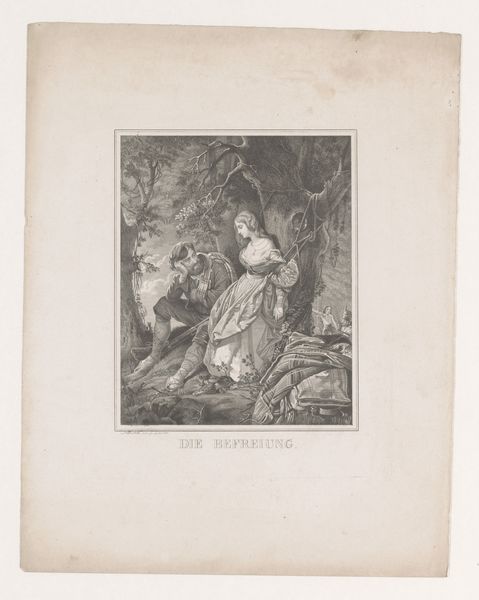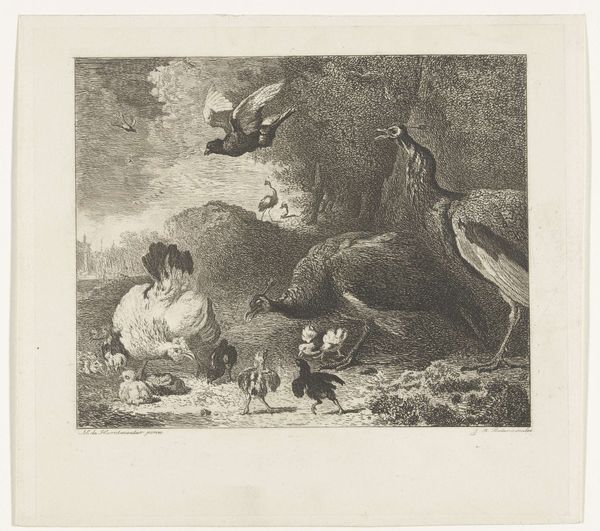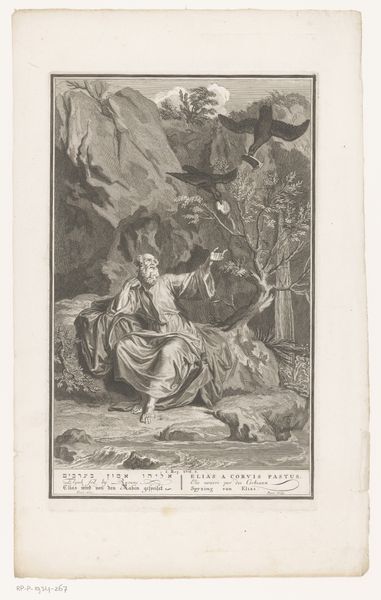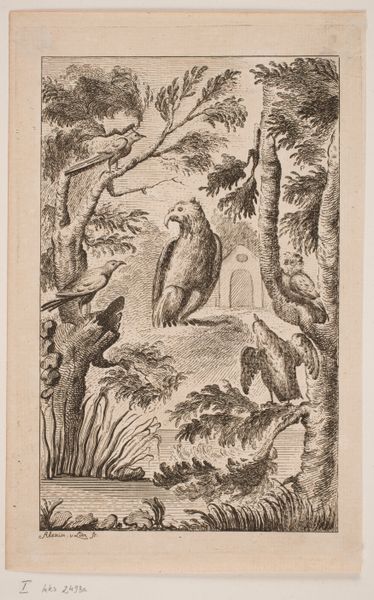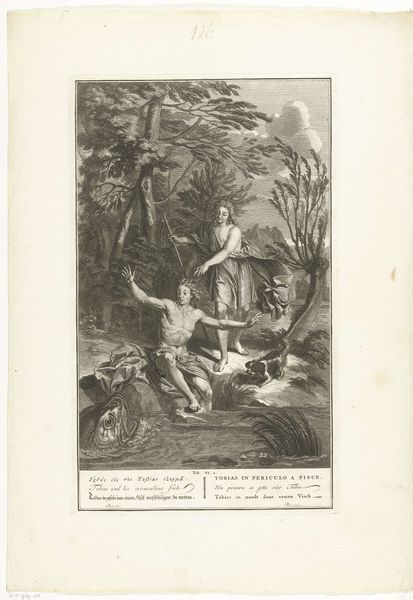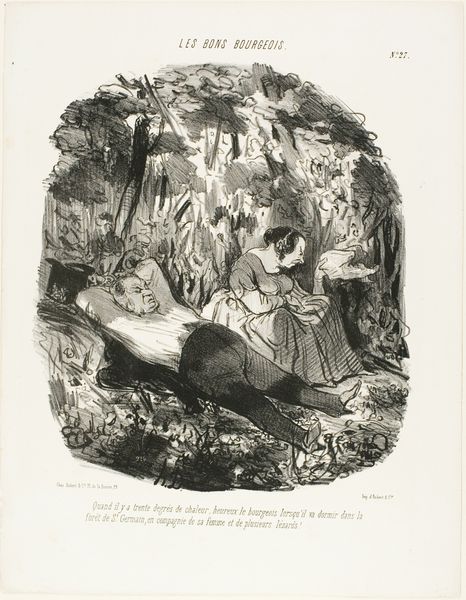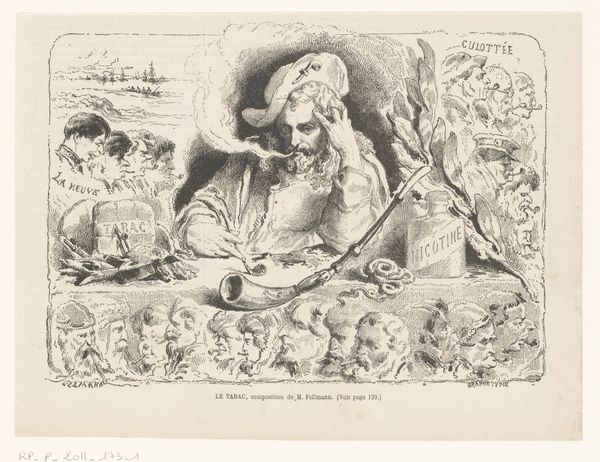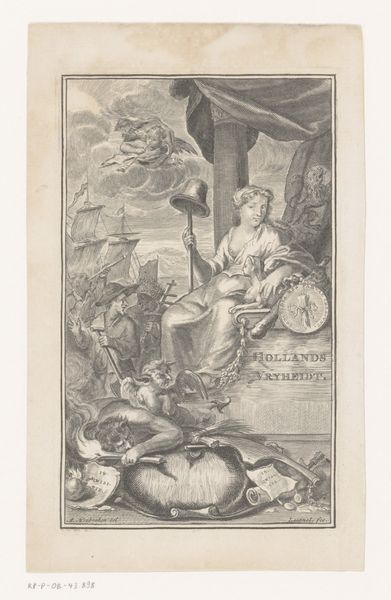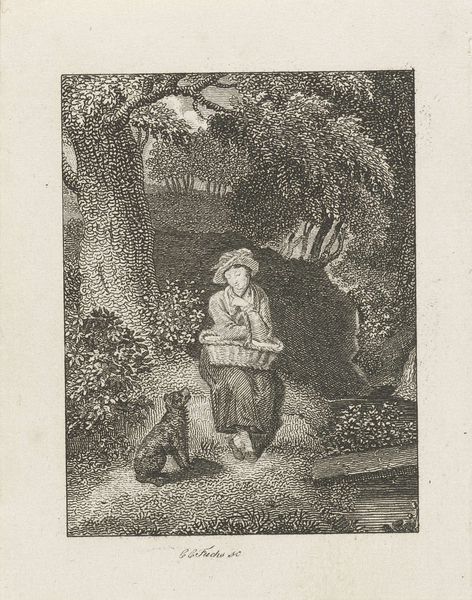
Fable V, plate five from Lehrreiche Fabeln aus dem Reiche der Theire 1743
0:00
0:00
drawing, print, etching, paper
#
drawing
#
narrative-art
#
baroque
#
animal
# print
#
etching
#
paper
#
history-painting
Dimensions: 368 × 299 mm (image); 424 × 318 mm (plate); 512 × 366 mm (sheet)
Copyright: Public Domain
Johann Elias Ridinger created this print, Fable V, in the 18th century using etching and engraving techniques. These processes involve incising lines into a metal plate, applying ink, and then transferring the image onto paper. The resulting print has a graphic quality, with fine lines that create texture and tone. Look closely, and you'll see the detailed rendering of the animals' fur and the surrounding foliage. The artist's skill in manipulating line weight creates depth, drawing the viewer into the fable's world. Prints like these were often produced in multiples, making them accessible to a wider audience. They served as a means of disseminating moral lessons and stories, reflecting the social and cultural values of the time. The labor-intensive process of creating the plate ensured a degree of quality, while the printing itself allowed for wider consumption. By examining the materials and methods used, we can understand the artwork not just as an image, but as a product of its time, reflecting the intersection of art, craft, and social context.
Comments
No comments
Be the first to comment and join the conversation on the ultimate creative platform.
